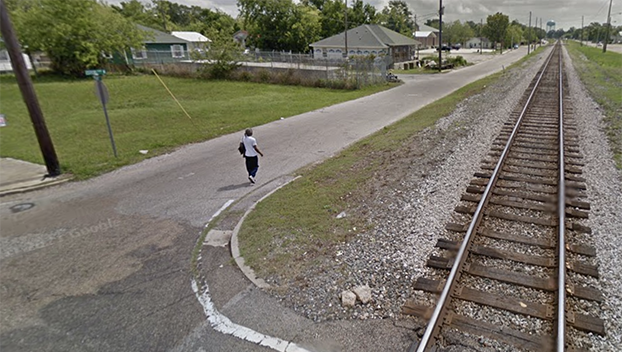Erasing history or eliminating confusion? Mississippi city faces backlash after attempts to rename street.
Published 6:57 am Sunday, January 16, 2022
The signs that triggered outrage in Biloxi’s Ward 2 last week looked ordinary enough.
In blue font on a white background, they announced that the Biloxi Planning Commission would hold a public hearing on “street name change from Esters Blvd. North to Railroad St.”
To East Biloxi residents who remember the contributions of Michael Esters as the city’s first Black councilman, the language suggested the city was considering an act of great disrespect: removing his name from the street that had honored him since he was killed by a train while driving across the tracks there in 1983. Elected two years earlier, he was only 31 years old.
The street named for him consists of two roads, one north of the railroad tracks and one south. Both roads were previously called Railroad Street.
Ward 2 Councilman Felix Gines said he received 60-70 phone calls asking what was going on, plus text and Facebook messages. Like his constituents, Gines said, he was “caught off guard” and “blindsided” by the signs. On Facebook, residents worried about the erasure of the neighborhood’s history.
“It looked like a betrayal of the community,” Gines said.
He called Mayor Andrew “Fofo” Gilich, who didn’t know about the proposal either, to get the item removed from the Planning Commission’s agenda for their Jan. 20 meeting. Then Gines personally took down about 18 signs posted around the neighborhood.
Community development director Jerry Creel told the Sun Herald that removing the name of Esters altogether was never the plan.
North of the railroad tracks, Esters Boulevard becomes North Railroad Street, then turns into Strangi Avenue for a few blocks, then back to Railroad Street again. The goal, Creel said, was to eliminate confusion that could affect first-responders by making sure that section of road has a unique and consistent name.
Any plans to alter the street name have been tabled for at least a few months.
Eventually, the city may formally change the entire northern part of the street to North Esters and the southern to South Esters, Creel said.
Creel said he should have consulted Gines before moving forward. “It was my mistake,” he said. “I take responsibility for it. … The people went out there one day and saw the signs and misinterpreted it, thinking we’re fixing to remove the Esters name, and that was not the case and that was never the suggestion.”
THE LEGACY OF MICHAEL ESTERS
When Esters was killed in March 1983, a columnist for the Daily Herald described him as “an oasis of logic and social conscience in a regularly heaving sea of political conflict.”
He was elected in 1981 to represent the newly created Ward 2, which remains the only predominantly Black ward in Biloxi. The graduate of Notre Dame High School had led the Black Civil Rights Organization of Biloxi and worked on voter education and outreach efforts before being elected to the City Council.
On the council, he championed funding for John Henry Beck Park and successfully fought for an ordinance to cut down on sales of alcohol to minors.
James Crowell, president of the Biloxi NAACP, said Esters worked hard to keep the community informed about city decisions and policies. He also brought Ward 2 residents’ concerns to the council.
On the night Esters was killed, he was heading home from an NAACP meeting, where Crowell had heard him give an update on city issues, he said. Esters won a reputation for fighting hard for his community.
“So for that reason, when he was killed there on the track, it really tore a lot of people up,” he said. The name of the street kept his legacy alive in Biloxi.
“A lot of us, when we walk, drive down that street, and talk about how it came about, it brings back memories to us,” he said.
To Crowell, the name is especially important because there are few streets in the city named for local Black leaders.
When he learned about the signs announcing the public hearing on the street name, he posted on the Biloxi NAACP Facebook page to urge residents to attend the Jan. 20 meeting of the planning commission. Even though the item is no longer on the agenda, Crowell still plans to go to the meeting, just in case.
STREET NAME ISSUES IN BILOXI
Creel said discussion of the street name began a few weeks ago when a staffer pointed out the inconsistencies in the name of the northern portion of the street, which stemmed from recent railroad crossing closures.
Assigning addresses is part of his department’s duties.
The signs went up to invite the community to provide input into discussion on the name change, Creel said. The planning commission would consider the issue and then make a recommendation to the City Council, which would vote on the matter.
“All this is to do is to make sure that for police and fire and clear understanding, that the name, whatever the name is, it’s the same from one end of that street to the other,” he said.
He said he spoke with Biloxi’s Chief Administrative Officer Michael Leonard, who agreed it was a good idea to consider a name change for part of the street.
“We just didn’t think about contacting the council person, which in retrospect would have been the right thing to do, to talk to him and let him know what we were proposing,” Creel said.
A week after the issue was pulled from the planning commission agenda, Gines was glad the resolution had been quick. And he said Creel had told him that removing the Esters name from part of the street had not been on the table.
“But of course the sign said different,” Gines said.






